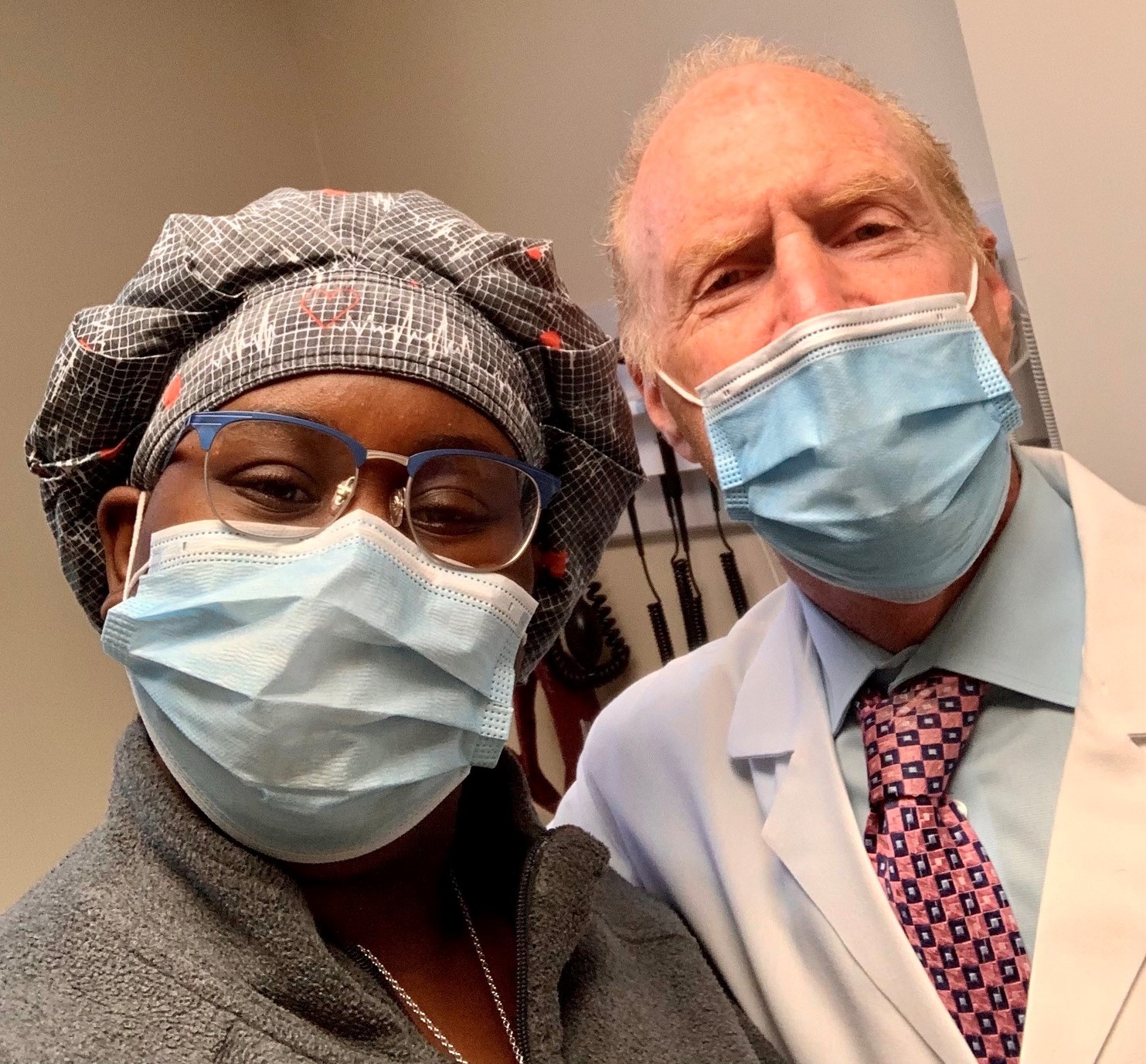
Three years ago, Teyana Goodwin began experiencing intermittent vague symptoms like double vision, muscle spasms, fatigue, and extreme nausea. The otherwise healthy 28-year-old went to several emergency rooms and physicians searching for answers. Then one day, the nurse and mother woke up in the hospital with significant paralysis and had to relearn to move her legs and arms.
“It was a terrible feeling. I wasn’t able to keep food down, so I lost 25 pounds in two months. I didn’t feel strong enough to take care of my daughter who was only four years old at the time,” she explains. “Every doctor I saw was fuzzy about my diagnosis. No one could figure out with any certainty what was wrong.”
Then, Ms. Goodwin came to David Blady, MD, a neurologist at Summit Health for help. He confirmed a diagnosis of multiple sclerosis (MS)—an autoimmune disorder that causes the body to mistakenly attack the layer that protects the brain and spinal cord nerve fibers. When that layer of protection is damaged, messages are unable to travel efficiently along the nerves. This causes an interruption between the brain and the rest of the body.
Ms. Goodwin is not alone. There are more than 2.3 million people worldwide living with this chronic, incurable, and often invisible illness according to the Multiple Sclerosis Society. In early stages of MS, the body can repair itself, but after time, this activity can lead to long-lasting damage. MS is difficult to diagnose because it can cause a range of symptoms including vision impairment, fatigue, tingling sensations, or bladder dysfunction. In the later stages of the disease, patients can lose the ability to walk or think clearly.
“Part of the difficulty of this disease is that the symptoms can be very vague and variable. Patients will tell you they feel tired, mentally sluggish, and have odd sensations. This makes it challenging to diagnose,” says Dr. Blady.
“No one wants this diagnosis,” adds Ms. Goodwin, “but not having an answer, and not knowing what is wrong when you know something is very wrong is depressing. It is hard having to go through so many doctors until someone finally takes the time to dig a little deeper.”
Dr. Blady took her concerns seriously. He empathized with what she had been through and wanted to treat her aggressively for MS. “He was an open book and very knowledgeable,” she describes. “I appreciated his honesty and together we hit the ground running.”
Today, there are 15 or so disease-modifying drugs available for MS. But there is no one-size-fits-all approach to treating patients. “There are no correct answers, so it is essential that the patient has full trust in their caregiver,” explains Dr. Blady. “My philosophy is to present the patient with all their options. I tell them what I think is the best choice and why. Then, I listen to their opinion. It is easy for me to pick a treatment, but I am not the one getting the shot or putting up with the side effects. That is why we work together as a team.”
Ms. Goodwin started receiving treatment for MS at Summit Health’s Infusion Center. After an initial loading dose, she now receives infusion therapy every six months. “The infusion center is peaceful and calm,” she describes. “The nurses are excellent, and it really is a beautiful place to spend the day.”
The therapy has helped her walk and feel better. But she still suffers from crippling bouts of fatigue. “Unfortunately, MS is a progressive disease and it is very scary being diagnosed so young. You do not know what your future holds,” she says. “There is no cure. The only hope is to stay in line with the treatment and keep the advancement of symptoms at bay.”
As a lead nurse in primary care at Summit Health’s Clifton office, Ms. Goodwin feels proud to be treated in the same facility where she works. After her positive experience with Dr. Blady, she switched all of her specialists over to the medical group. The convenient weekend and late-night appointments also made it easier for Ms. Goodwin to receive care.
“The fact that we have multidisciplinary specialists to deal with any foreseeable complications of this disease is very helpful. We all communicate together and share records. My patients often require physical therapy and consultations with urologists or hematologists, and ancillary services like imaging. At Summit Health, they can get this all under one roof,” says Dr. Blady.
As a health care worker, Ms. Goodwin says the diagnosis has opened her eyes to the struggles others may face. “They call MS an invisible illness because you look normal, but the symptoms you experience are very real. It reminds me to always listen to my patients and give them the benefit of the doubt because not everything can be seen right away with a test,” she explains.
There is no single test that can diagnose MS, and since many of the symptoms experienced with the disease can also crop up with other conditions, it can be a difficult diagnosis to confirm. Magnetic resonance imaging (MRI) is the best tool for identifying brain and spinal cord lesions or swelling that may indicate MS.
Ms. Goodwin also encourages patients to be their own advocates. “Seek out a second, third, and even fourth opinion. If you are not confident in the team you have in place then you need to make adjustments and get different physicians,” she advises. “At the end of the day it is your life. Do not give up until you are satisfied with the answers.”
